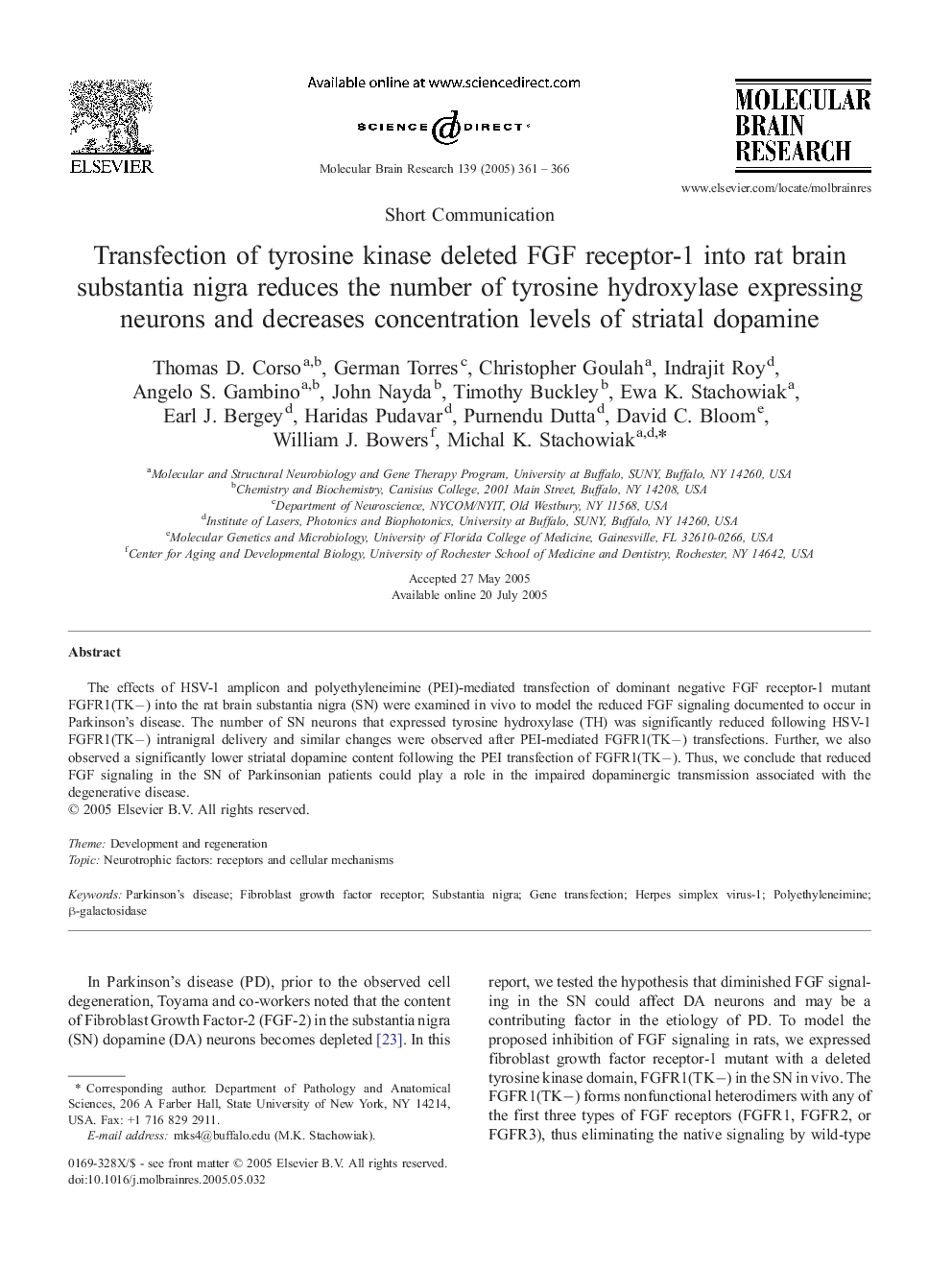| Article ID | Journal | Published Year | Pages | File Type |
|---|---|---|---|---|
| 9410613 | Molecular Brain Research | 2005 | 6 Pages |
Abstract
The effects of HSV-1 amplicon and polyethyleneimine (PEI)-mediated transfection of dominant negative FGF receptor-1 mutant FGFR1(TKâ) into the rat brain substantia nigra (SN) were examined in vivo to model the reduced FGF signaling documented to occur in Parkinson's disease. The number of SN neurons that expressed tyrosine hydroxylase (TH) was significantly reduced following HSV-1 FGFR1(TKâ) intranigral delivery and similar changes were observed after PEI-mediated FGFR1(TKâ) transfections. Further, we also observed a significantly lower striatal dopamine content following the PEI transfection of FGFR1(TKâ). Thus, we conclude that reduced FGF signaling in the SN of Parkinsonian patients could play a role in the impaired dopaminergic transmission associated with the degenerative disease.
Keywords
Related Topics
Life Sciences
Neuroscience
Cellular and Molecular Neuroscience
Authors
Thomas D. Corso, German Torres, Christopher Goulah, Indrajit Roy, Angelo S. Gambino, John Nayda, Timothy Buckley, Ewa K. Stachowiak, Earl J. Bergey, Haridas Pudavar, Purnendu Dutta, David C. Bloom, William J. Bowers, Michal K. Stachowiak,
